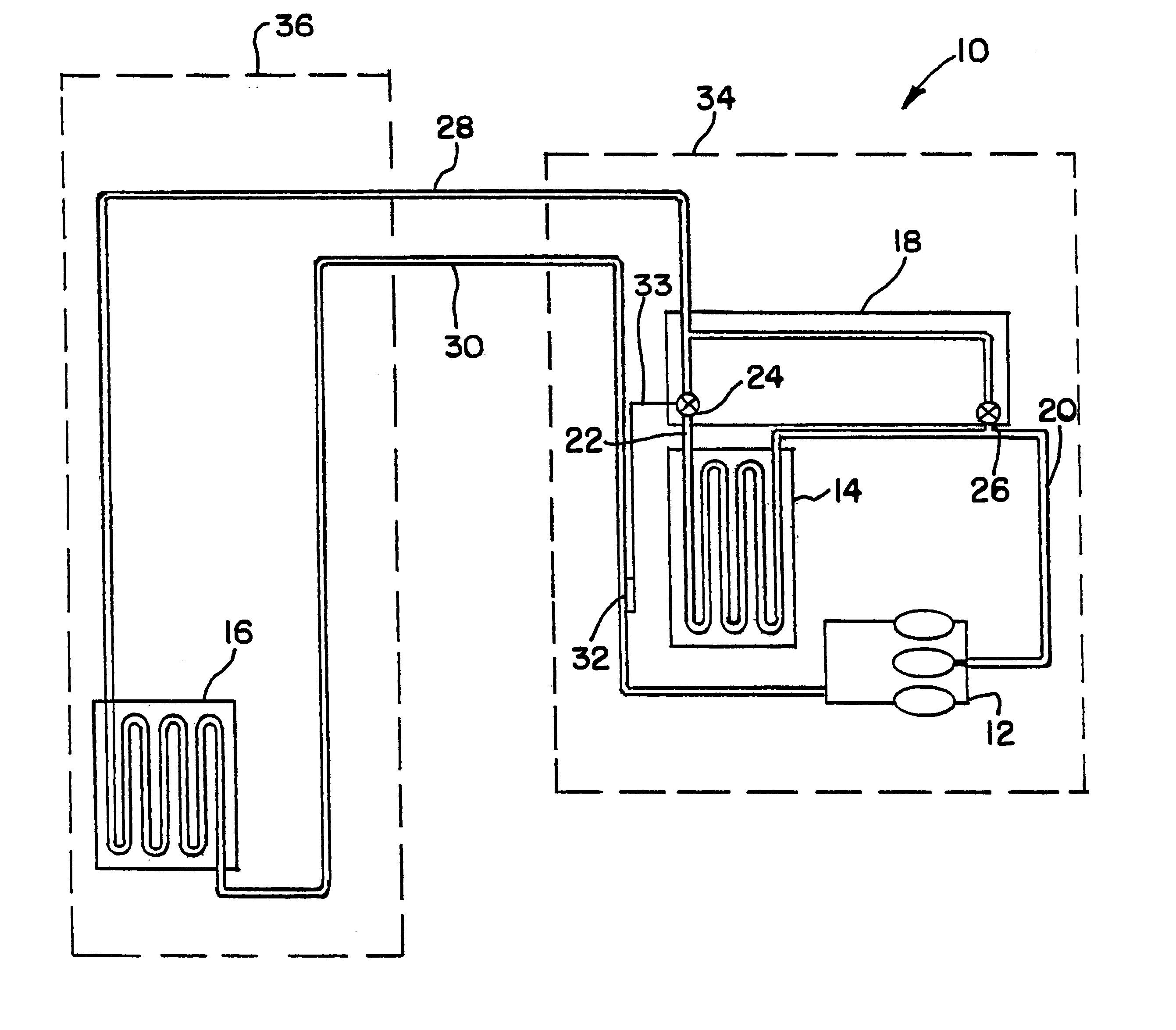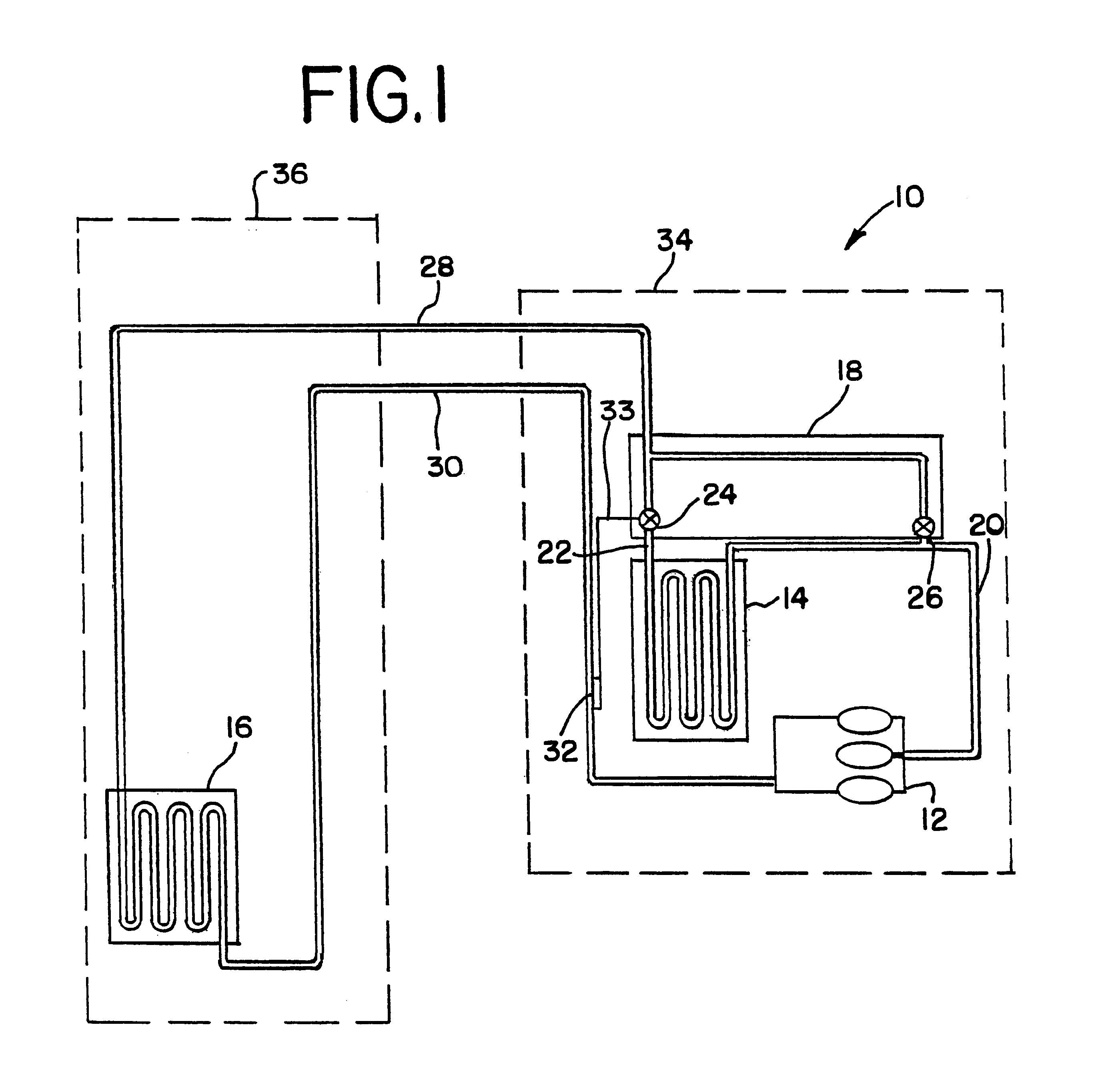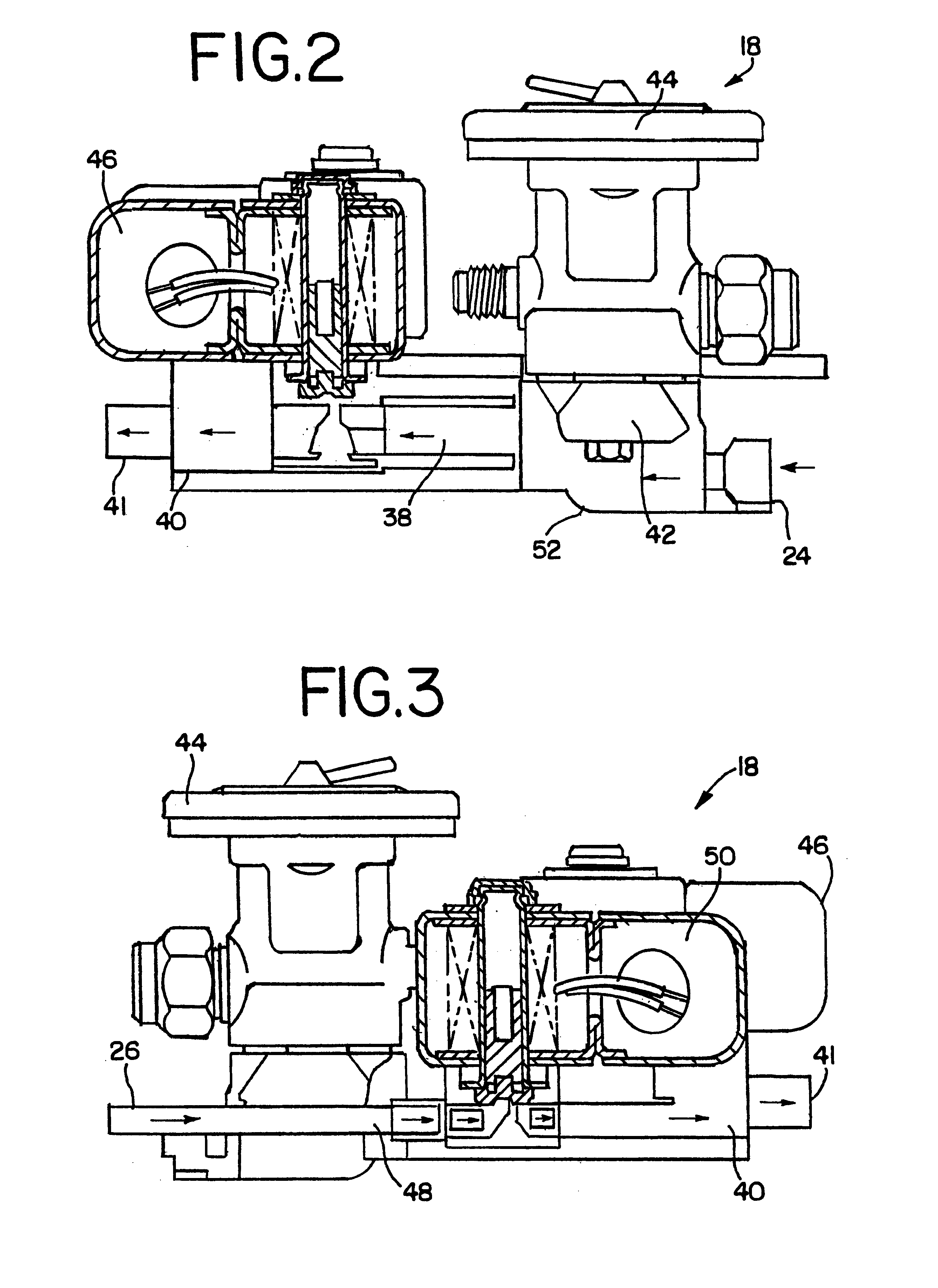Vapor compression system and method
a technology of vapor compression system and vapor compression chamber, which is applied in the direction of mechanical equipment, refrigeration components, lighting and heating apparatus, etc., can solve the problems of reducing the shelf life of food products contained in refrigeration/freezer cabinets, increasing the load on the case, and reducing the heat transfer efficiency, so as to reduce the velocity and hence the defrosting efficiency, the effect of less cooling tim
- Summary
- Abstract
- Description
- Claims
- Application Information
AI Technical Summary
Benefits of technology
Problems solved by technology
Method used
Image
Examples
example ii
In the Tyler Chest Freezer equipped with electric defrosting circuits, the low temperature operating test was carried out using the electric defrosting circuit to defrost the evaporator. The time needed for the XDX system and an electric defrost system to complete defrost and to return to the 5.degree. F. (-14.4.degree. C.) operating set point appears in Table C below.
As shown above, the XDX system using forward-flow defrost through the multifunctional valve needs less time to completely defrost the evaporator, and substantially less time to return to refrigeration temperature.
example iii
This Example compares the performance of a vapor compression refrigeration system of the present invention (the XDX system) with that of a conventional system operating in the medium temperature range.
The refrigeration circuit of an 8 ft. (2.43 m) IFI meat case (Model EM5G-8) was equipped with a multifunctional device as described herein (which included a Sporlan Q-body thermostatic expansion valve). A like thermostatic expansion valve was plumbed into a bypass line so that the refrigeration circuit could be operated either as an XDX refrigeration system or as conventional refrigeration system.
This refrigeration circuit included an evaporator feed line (in the XDX mode) having an outside tube diameter of 0.5 in. (1.27 cm) and a run length (compressor to evaporator) of approximately 35 ft. (10.67 m). The liquid feed line (in the conventional mode) had an outside tube diameter of 0.375 in. (0.95 cm) and approximately the same run length. Both modes of operation used the same condenser...
example iv
This Example compares the performance of a vapor compression refrigeration system of the present invention (the XDX system), an annular flow refrigeration system, with that of a conventional system operating in the low temperature range.
The refrigeration circuit of a four door IFI freezer (Model EPG-4) was equipped with a multifunctional device as described herein (which included a Sporlan Q-body thermostatic expansion valve). A like thermostatic expansion valve was plumbed into a bypass line so that the refrigeration circuit could be operated either as an XDX refrigeration system or a conventional refrigeration system.
This refrigeration circuit included an evaporator feed line (in the XDX mode) having an outside tube diameter of 0.5 in. (1.27 cm) and a run length from the compressorized unit (the assembly of the compressor, condenser and receiver) to the evaporator of approximately 20 ft. (6.10 m) was the same for both the XD and conventional modes. The liquid feed line (in the con...
PUM
 Login to View More
Login to View More Abstract
Description
Claims
Application Information
 Login to View More
Login to View More - R&D
- Intellectual Property
- Life Sciences
- Materials
- Tech Scout
- Unparalleled Data Quality
- Higher Quality Content
- 60% Fewer Hallucinations
Browse by: Latest US Patents, China's latest patents, Technical Efficacy Thesaurus, Application Domain, Technology Topic, Popular Technical Reports.
© 2025 PatSnap. All rights reserved.Legal|Privacy policy|Modern Slavery Act Transparency Statement|Sitemap|About US| Contact US: help@patsnap.com



